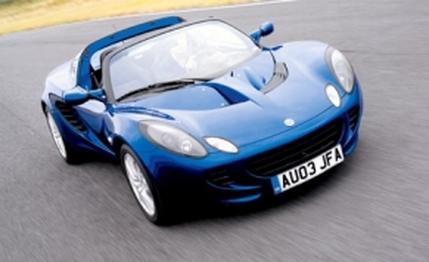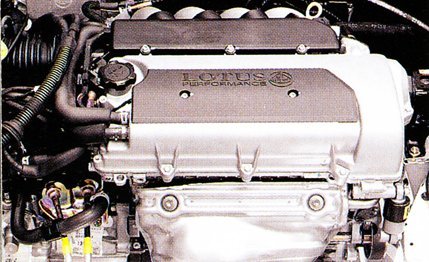 First Drive Review
First Drive Review

We seem to have been promising a fully certified, street-legal Lotus Elise for years. That's because Lotus for years has been saying it's coming to the U.S.—since 1997, in fact. Well, now at last it is ready. The first federalized Elises should arrive in May.
The good news is that it is a better car than the spartan original. It has 60 percent more power but is only 14 percent heavier than the existing European model. It has the airbags, the anti-lock brakes, and the air conditioning that the car has lacked until now. Perhaps not so good is its sticker of $39,000. It's a fair price for the nearest thing to a modern race car you can drive on the road but will discourage those who see it as a sexy little boulevard cruiser.

That's probably just as well because the Lotus Elise, as a closely focused driver's car, makes few compromises on behalf of the well-being of a passenger. You sit on a thinly padded seat in an aluminum tub (the Elise chassis is made from aluminum extrusions bonded together). There is hardly enough room for two, so the driver's seat is adjustable but the passenger's is fixed—and the cockpit space on the right-hand side is just two-thirds of that provided for the driver.
Elise enthusiasts—there are at least 60 owners of race-spec cars in the U.S. as of this writing—will accept that what it lacks in comfort is compensated for by the performance and handling. Lotus claims the federalized Elise will do 0 to 60 mph in 4.9 seconds and run to 141 mph; prototypes ran to nearly 150 mph. Not much this side of an exotic supercar will keep up with it on a racetrack.

The Elise was designed around the 1.8-liter Rover K-series engine found in the mid-engined MGF sports car, a good choice in 1996 but now getting on in years. Rover has never certified that engine for the U.S., and Lotus judged that a federal emissions program would be too expensive to undertake alone. It looked around for suitable alternatives, engines that were already in use in the U.S. Roger Becker, a veteran development engineer who started at Lotus under Colin Chapman, the company's founder, has been leading the U.S.-certification project. He picked up an old relationship with Toyota (which for three years in the 1980s owned 21 percent of Lotus) and secured a deal to use the 1.8-liter VVTL-i (variable valve timing and lift) engine from the Celica GT-S and its accompanying C64 six-speed gearbox.
Although the internals of the engine are standard Toyota (in fact made by Yamaha), Lotus fits different intake and exhaust systems and, significantly, has devised its own engine control electronics. The result is 190 horsepower (10 up on the Celica) at 7800 rpm and 133 pound-feet of torque at 6800 rpm.